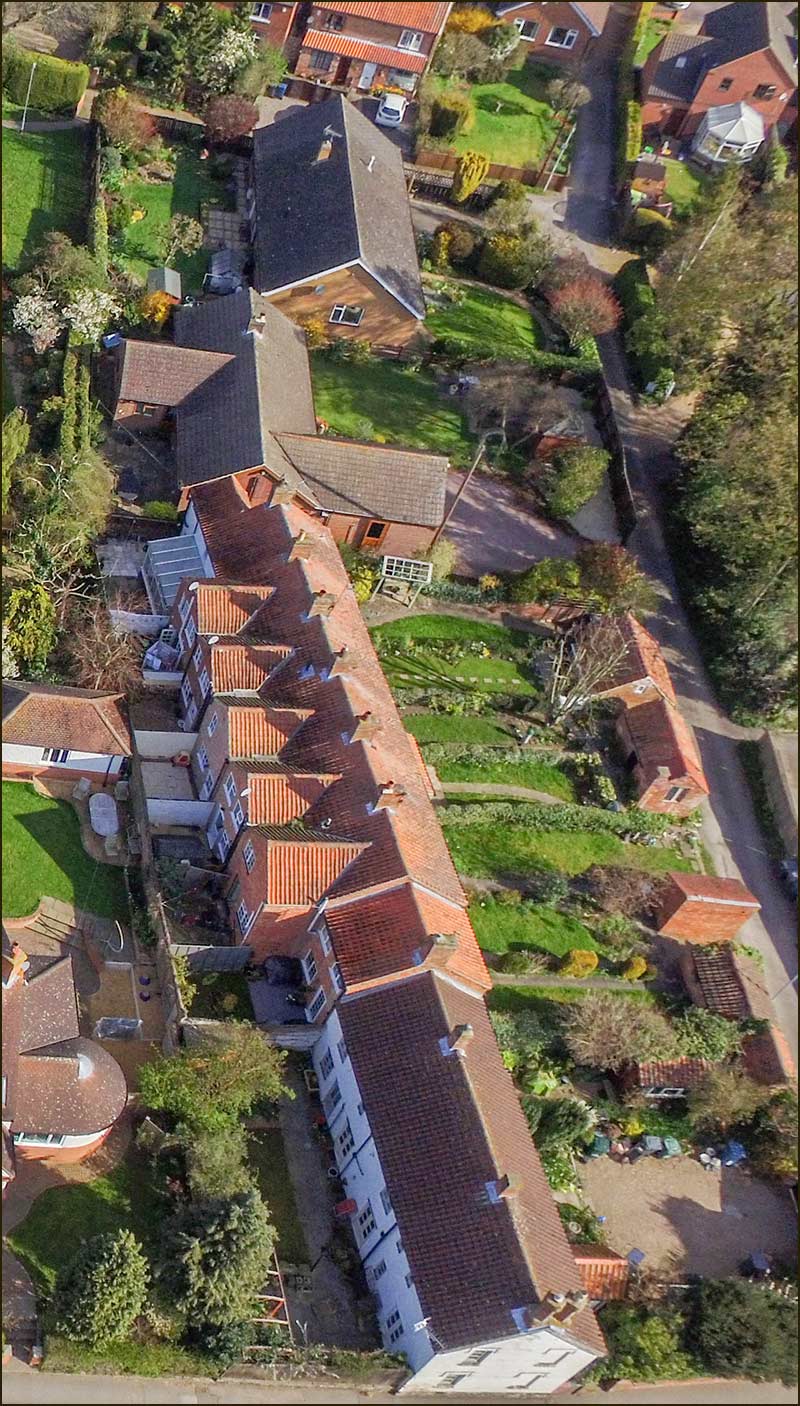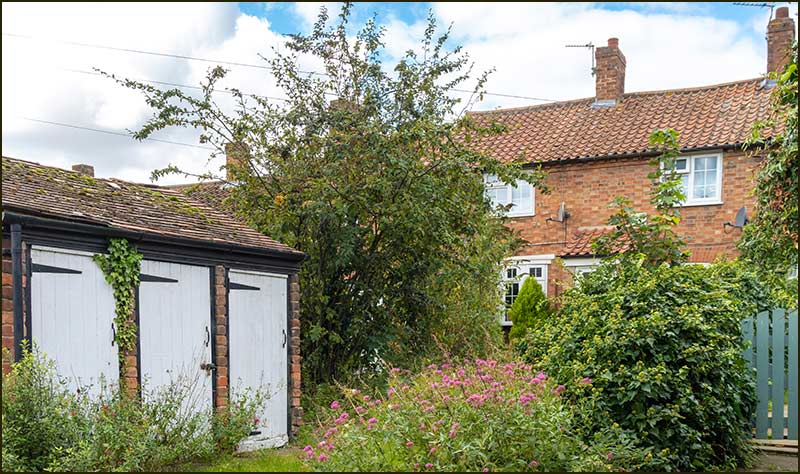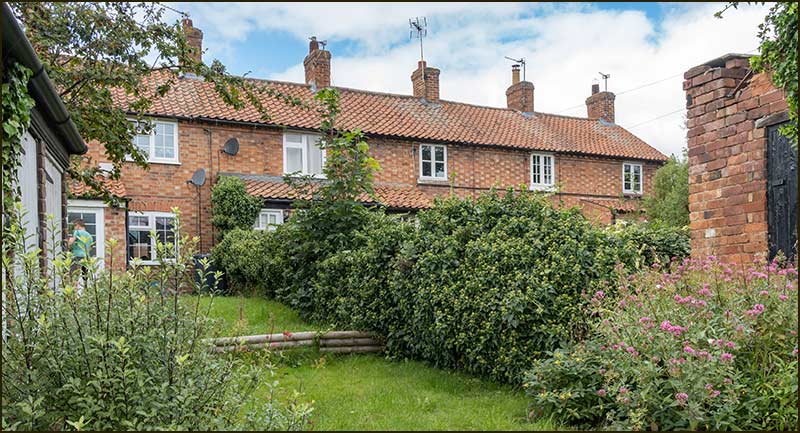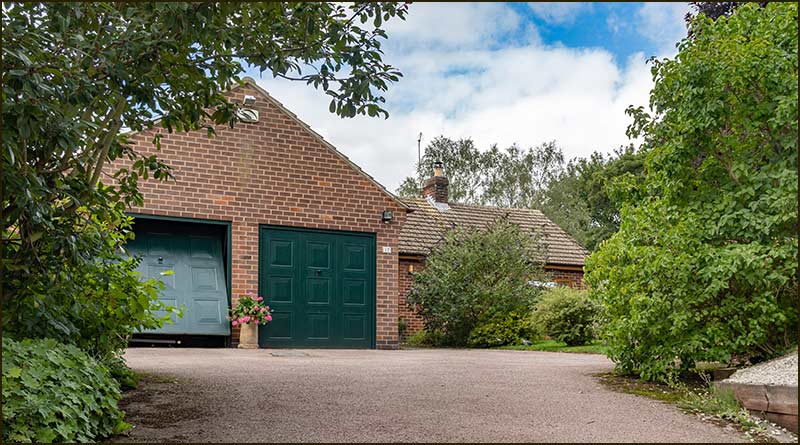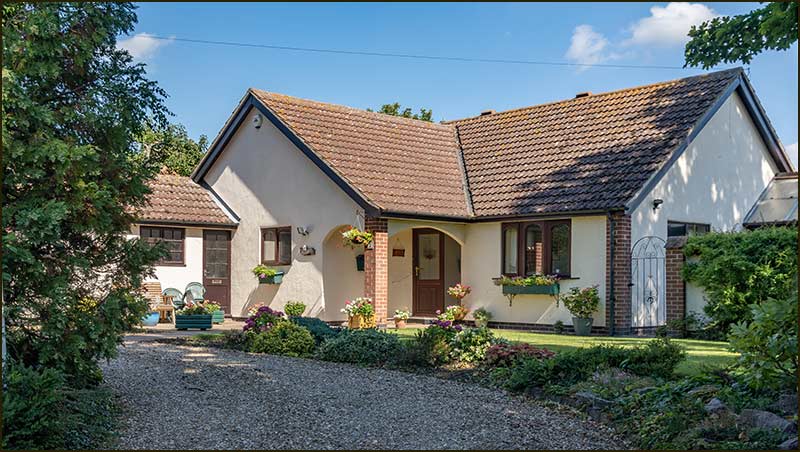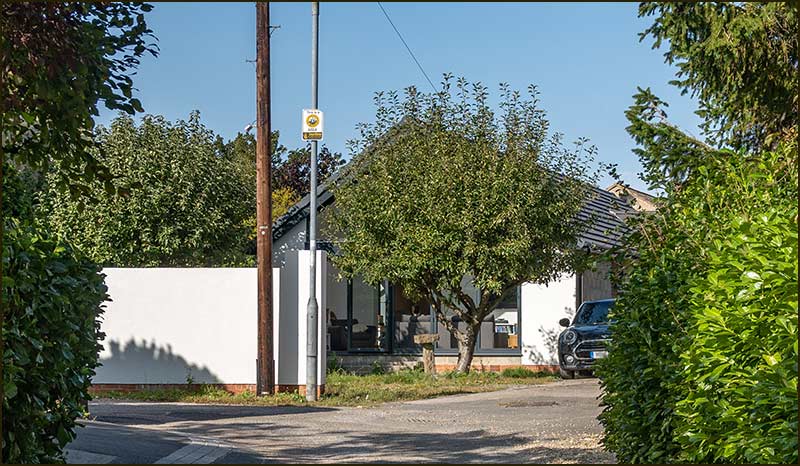Cropwell Bishop Streets: — Mill Lane (4-12-20)

Mill Lane is one of the old streets of Cropwell Bishop and like all the old streets, it didn’t need anyone to decide on its name, it just evolved.
Nottingham Road leads to Nottingham, Kinoulton Road to Kinoulton, so you would assume that Mill Lane once led to the village windmill – if only it was that simple.

The Mill
Cropwell Bishop did once have a windmill but it was built on a windy hill-top rather than lowly Mill Lane, but more about that in another street story.
Nevertheless, there was once a mill on Mill Lane, but it was powered by steam rather than wind.
The steam-powered mill was built in 1860 by a man named William Saxton. He was a wheelwright and had move to the village ten years earlier.
He lived at a house that already existed (number 6 Nottingham Road) and built the mill onto the side of it. He even included a bake house in the building.
Inevitably, the house became known as Mill House and the cottages as Mill Cottages.
This old photograph shows the corn-mill butting out from the house with its chimney at the rear. The house is easily recognisable as being, essentially, the same building that stands there today. Since being painted, it it has been called, The White House.
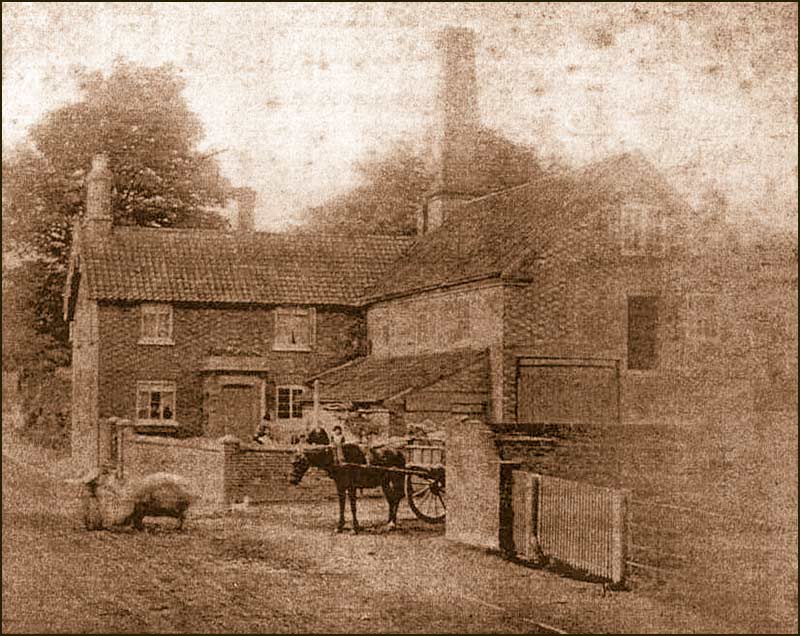
Saxton was described as a ‘maker of agricultural implements’ in the 1861 census, but this venture shows that he was far more skilled and daring than the average maker of cart-wheels. At the time, his steam mill was the only one within 10 miles of the village.
Nevertheless, in April 1861 we find him selling by auction, all of his wheelwright business.
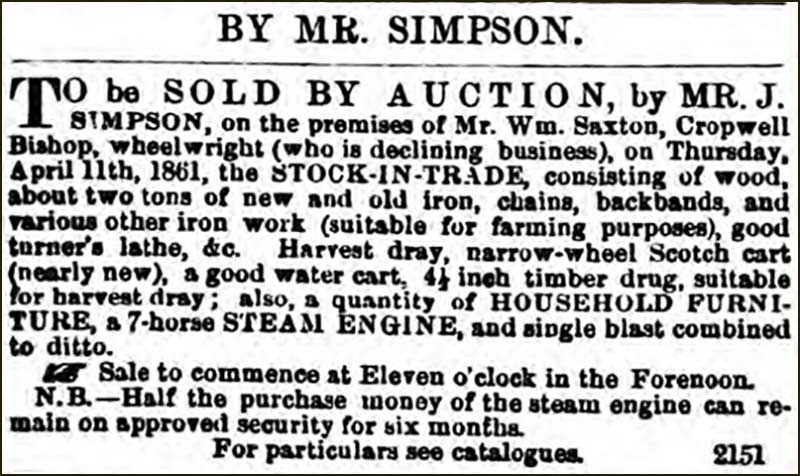
This is puzzling. However, I notice that the auction does not include the house or the corn mill. I wonder if he was selling his earlier wheelwright busines to enable him to concentrate on corn milling. He was selling a steam engine, but maybe this was a prototype than he no longer needed.
What we do know, is that 10 years later the mill was taken over by an Edward Wileman who came from Long Clawson.
Some 30 years after this, in the late 1890s, the mill was again taken over, this time by John Billings. He was assisted in the mill by his nephews, George Johnson and Ernest Johnson.
By 1904, the steam-mill had been working for over 40 years and the technology had proved itself safe – or so it seemed.
On Tuesday 2nd February 1904 its boiler exploded. This is how the event was described in the Grantham Journal:
“On Tuesday morning, about half-past ten, a serious accident occurred at the Steam Mill, occupied by Mr Billings. The boiler of the engine burst and wrecked the engine-house and premises.
Mr Billings and his nephew, Ernest Johnson, were in the mill at the time, and both were scalded and hurt by the debris.
Mr William Harrison, however, received the most serious injury. He was in front of the boiler, and was badly hurt by the falling bricks and scalded by the steam. How he escaped death is miraculous.
Bricks and tiles were hurled great distances, but, fortunately, fell without doing further damage.”
It is thought that the explosion was the result of a 'weak boiler plate'. All three men eventually recovered from their injuries.
For a time, John Billings and his wife, Ellen, lived at a crook cottage (details, later) further up Mill Lane.
In the 1911 census, when he was 76 years old, he classed himself as an 'old age pensioner' and was living with his wife and nephew, George, at Ivy Cottage near the canal bridge on Nottingham Road.
Following the explosion, the mill was never repaired. In 1918 a Mr Thompson took over the house. He was a newcomer to the village – an officer returning from the First World War – and had the mill’s ruins cleared away.
He also had the bake house and rear part of the mill repaired with a new façade, and incorporated into Mill House.
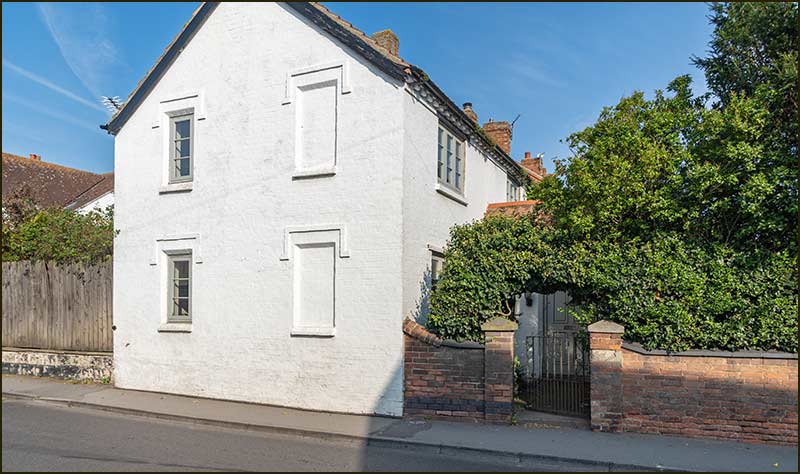
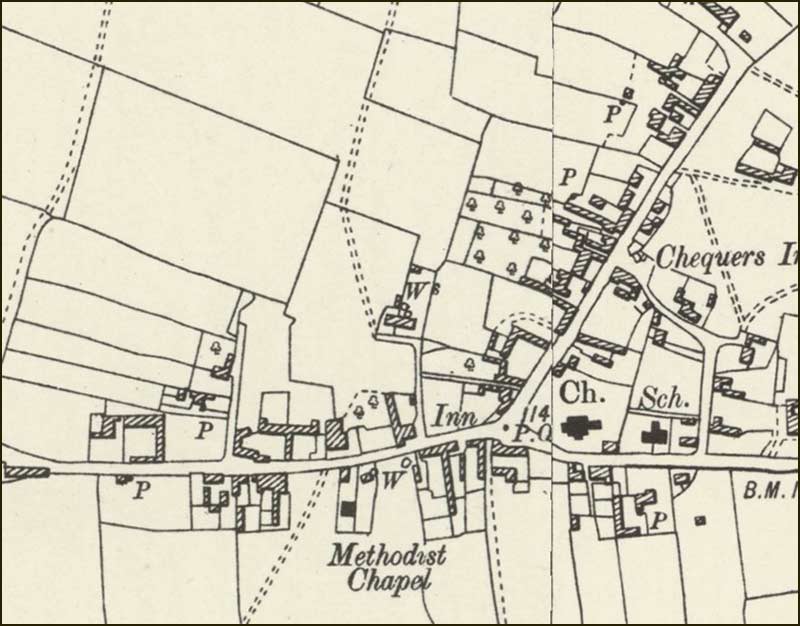
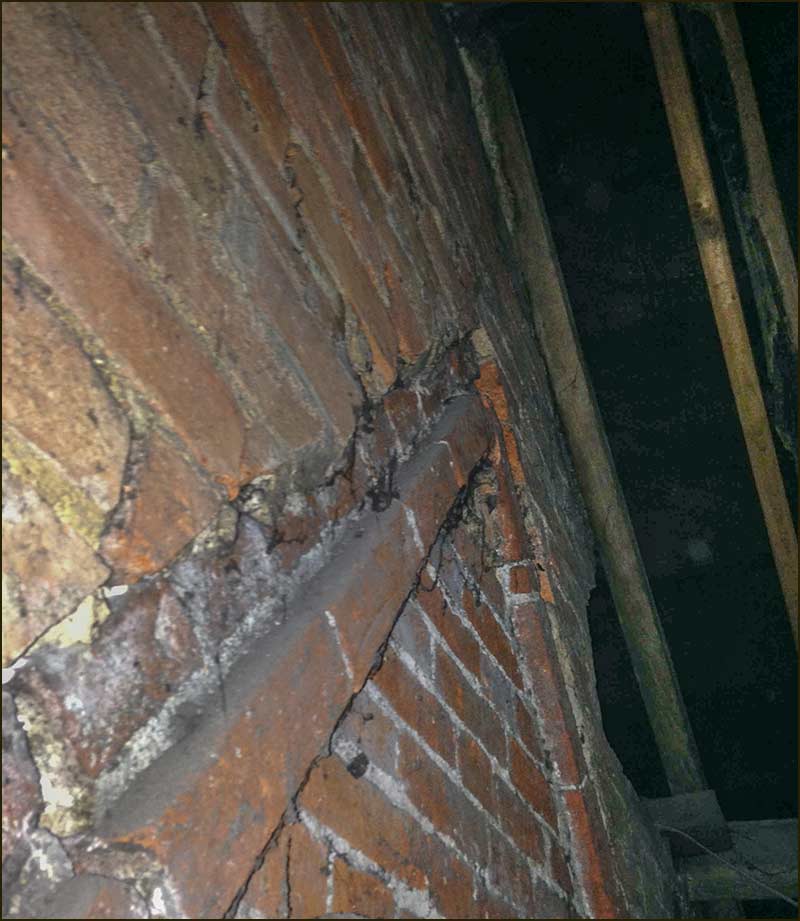
The lower gable suggests that the original house was much older than the adjoining terrace.
In the front garden there is still an underground cistern which would have held about 4000 gallons of rainwater for the steam engine.
A past resident of The White House that many people will recall the sight of, if not the name, was Noelle Gullick.
She and her husband bought the house in the 1950s when he started work as a mining engineer at the newly opened Cotgrave Coal Mine.
Decades later, when an elderly widow, she would be regularly seen driving in or out of Mill Lane in her low-down, Triumph Spitfire sports car.
The brick garage, at the end of Laurel Cottages, was small, but big enough for her pride and joy. The garage is still there, but not the car – or Noelle.

Name Changes
Now that you know about the corn-mill, you might think it only natural to call the street, Mill Lane. But events in villages are not always natural: the influence of people is much stronger than that of steam-engines.
In oldest known name of the street is Hallams Lane. We can trace Hallams back to 1751 and they have lived here ever since then – plus Hallems and Hallums, which were probably misspellings.
It think it is safe to assume that members of the Hallam family lived on the street and so it became known as the, ‘lane where the Hallams live’, or simply, Hallams Lane.
By the late 1890s, Hallams were no longer living on the street but John Billings was operating the corn-mill. Just a few years later, in the 1901 census, the row of terrace cottages adjoining the corn-mill were referred to as, 'Billings Row', but far end of the street was called Mill Lane.
Ten years later in the 1911 census, Billings Row is still mentioned, but now the far end of the street is called Billings Lane.
This demonstrates how, in olden days, street names were often the result of local-knowledge and preferences, and could easily change.
Today, we all know it as Mill Lane, a name that began to be used after the Second World War. I can't see this name going out of fashion, in spite of there being no mill in sight, Postal workers, sign makers, map makers, TomTom and Google can all sleep easy.
As for the terrace cottages, well, if they are referred to by a name at all, it tends to be Laurel Cottages.

An interesting fact about Laurel Cottages is their numbers. At one time they were numbered from 1 to 7 but then, as more homes were built on Mill Lane, they were given the odd numbers from 1 to 13.
The owner of 13 thought it an unlucky number, so simply changed it to 15. The home beyond accepted the change and became 17. This leaves everyone happy as long as there are no parcels for number 13 – that would be unlucky, or would it.
The photograph below shows Mill Lane and its cottages in 1949; not so different to today really.
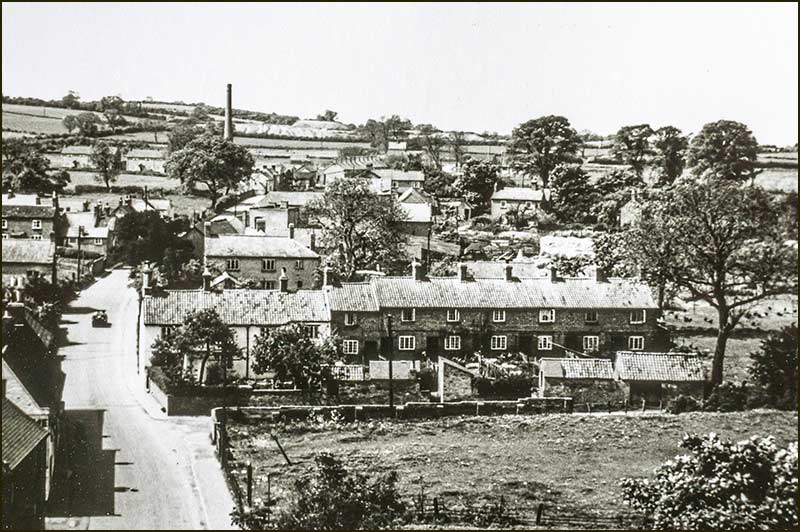
Looking beyond, you can see the chimney of the Cotton Brickworks that lay beyond Kinoulton Road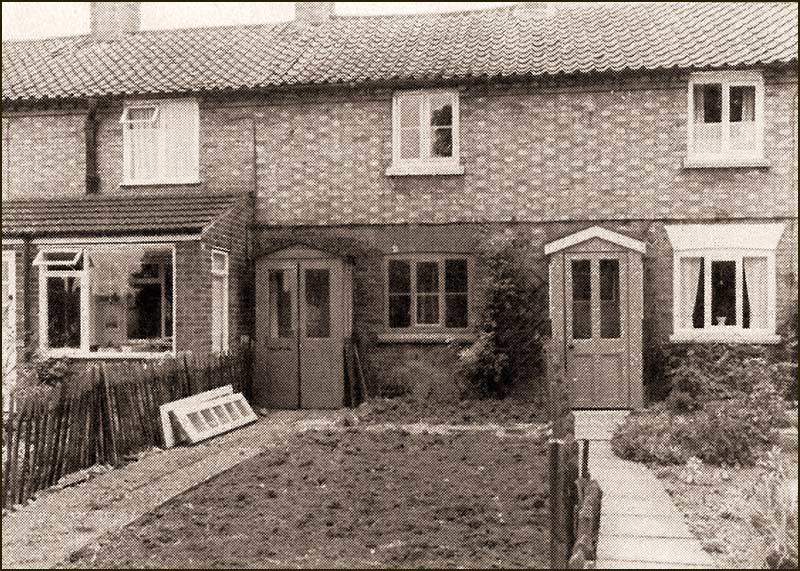
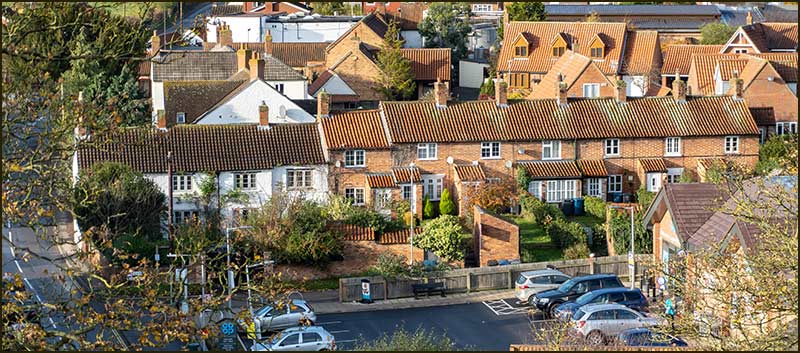
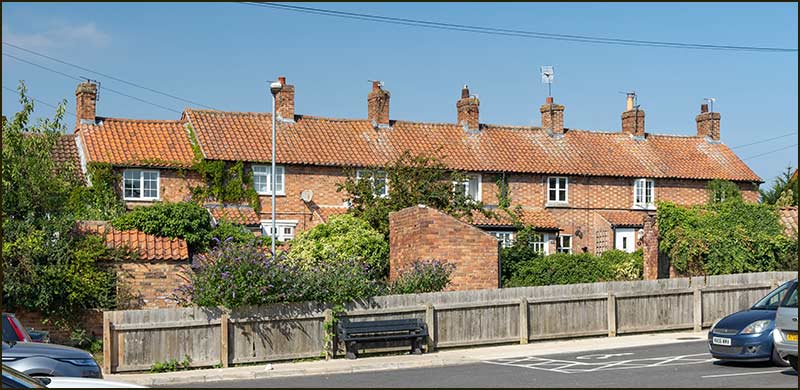

One resident of Billings Row in 1911 was a nine-year-old boy named Aubrey Harper. I am not sure which house he lived in but the 1911 census shows that he was there with his parents and older brother and sister.
He is known to many local people as the author, along with his wife Ethel, of the booklet, 'Chronicles of Cropwell Bishop'. It is a book I regularly refer to when preparing these street stories.

Beyond the Cottages
At the top of Mill Lane are two old cottages.

The two adjoining cottages, numbers 8 and 6, were once three. Until the 1960s there was another one on the right, described as a crook cottage.
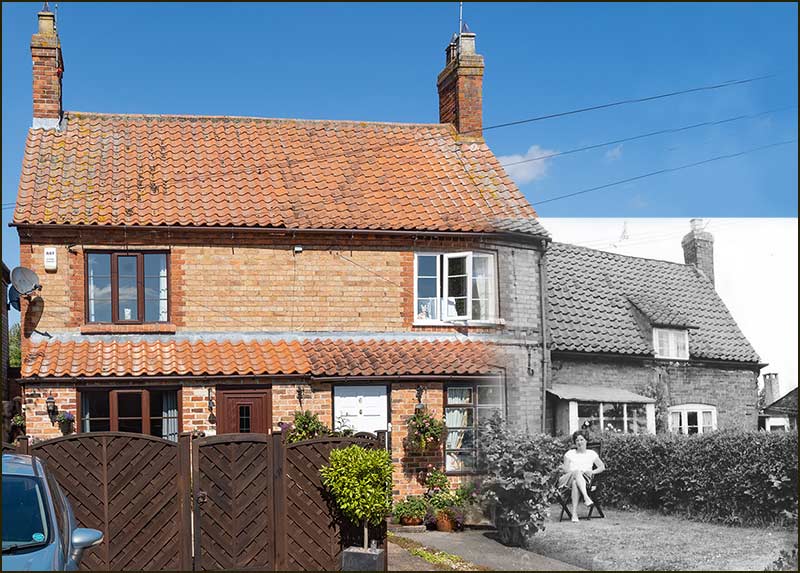
(in this image, a photo of the crook cottage is merged with the present-day cottages)
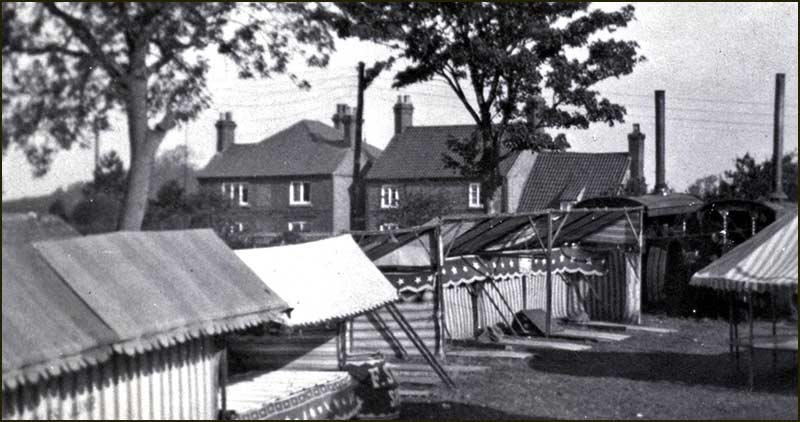
It was called a 'crook' cottage because its roof was supported by pairs of curved timbers, plus a cross beam to hold them together. The word, crooked, is derived from crook. So too, is hook.

On the right-hand side, note the long, black, wooden bungalow that once stood where the end of Smiths Close is now.
At the top end of Mill Lane stands a house that now has the name, Orchard Farm.
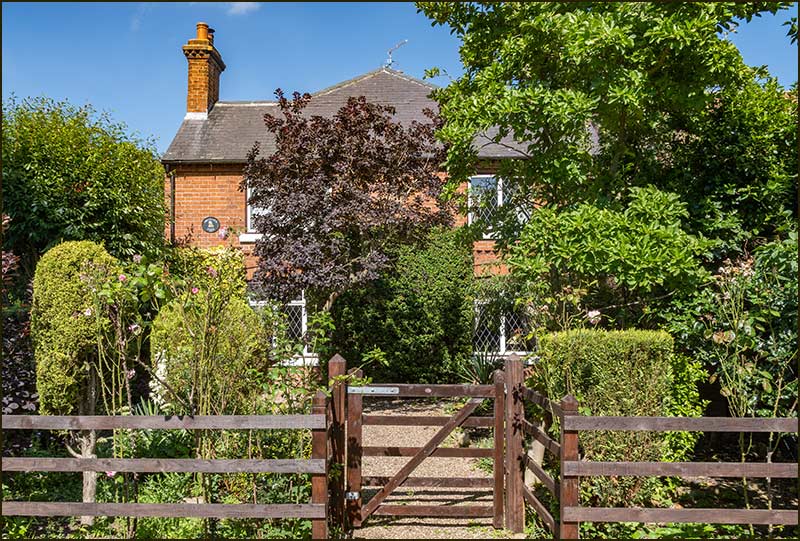
Before the 1970s, the view beyond here was of open fields and Hoe Hill.


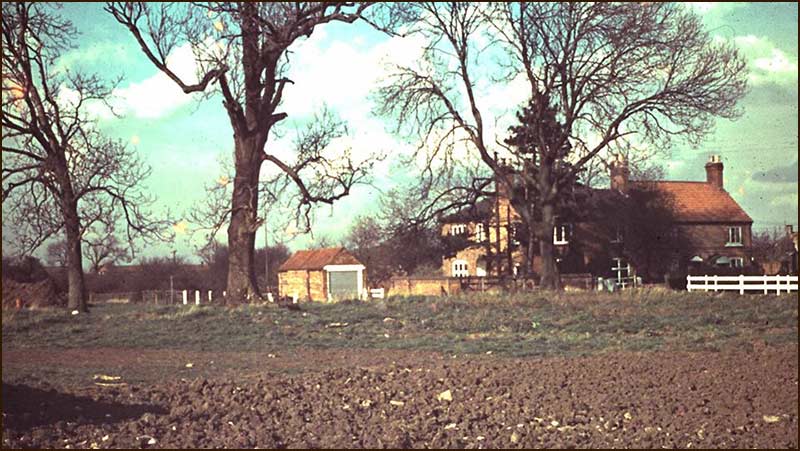

Cropwell Bishop Feast
Where the Co-Op and its car park now stand, was once a large patch of flat grassy land. It was useful for staging the odd village event – such as the annual Village Feast.
In Medieval times, it was custom for the parishioners to commemorate the founding of their parish church each year by having a feast or festival.
This custom lapsed for many years but was then revived in the 20th Century and took place on the first Sunday after the 12th September.

Festivities would begin on the Saturday and continue over Sunday, Monday and Tuesday.
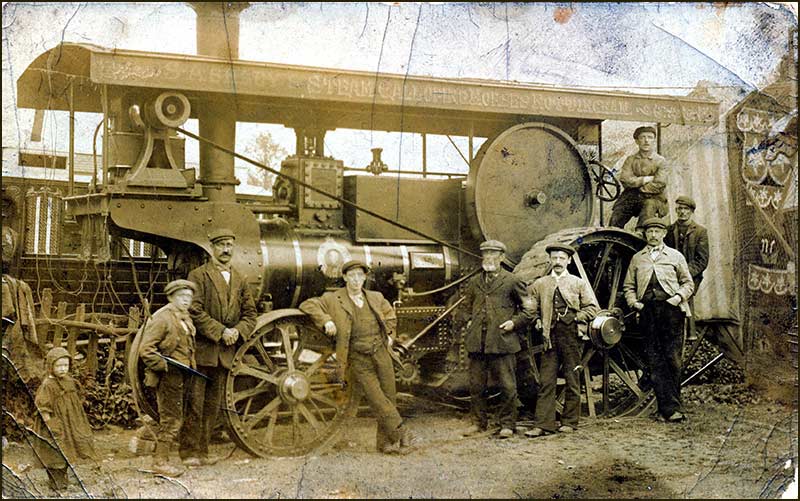
Visiting showmen brought roundabouts, swing-boats, coconut shies, cakewalk and hoopla. Magnificent traction engines set up in the paddock opposite the Wheatsheaf and also on the paddock near the Chequers.
The roundabout was illuminated by electricity from a dynamo driven by a traction engine, and a small engine provided the power for turning the roundabout and the organ blaring music. Paraffin flare lamps lit the side shows.
Cropwell Feast was brought to the village by the Ashley family in the latter years.

The Feast moved from this site to the Memorial Hall field in the late 1958. The reason for this was that a Co-Op shop was to be built on the land.
If you are new to the village, that last sentence has probably confused you: let me explain.
The current Co-Op store was opened two years ago. But in 1960, the same thing happened, a new Co-Op was opened on the same spot. It was there for only a couple of years before moving to Church Street where it stayed until 2018 when the present Co-Op was opened.
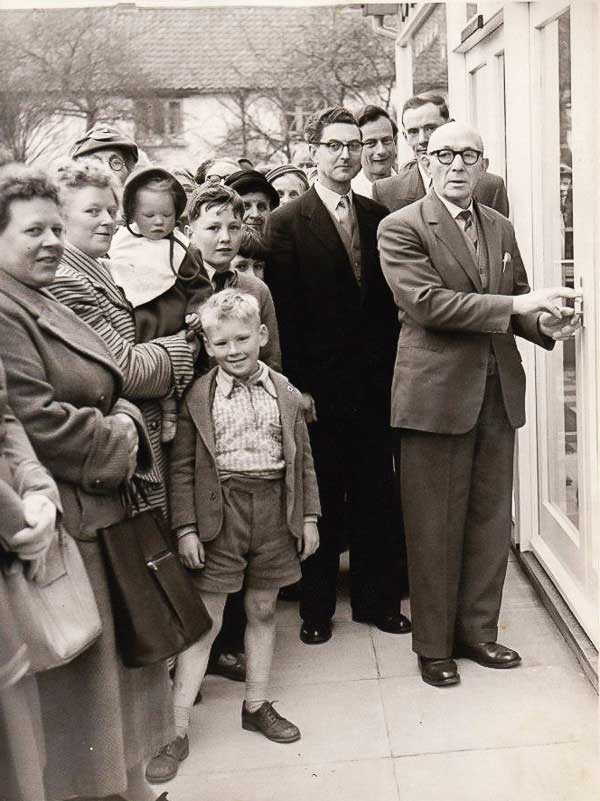
During the 1960s, mass entertainment, TV, foreign travel and cars had a profound effect on everyone's life and traditional village entertainment struggled to survive. By the early 1970s the traditional Cropwell Feast was no more.
In spite of being a short lane with only a handful of homes, Mill Lane has enjoyed a colourful history. It remains at the centre of the village and always will do.
Anyone living there hardly needs to remove their slippers if they want to pop out for food, drink, prayer, snack, hair-cut, or beauty treatment. Can't be bad.
Tony Jarrow
Note:
Thanks to Anne Terzza, Pam Barlow, Jonathan Good and Jane Jones for their help with this article.


More photos of Mill Lane
